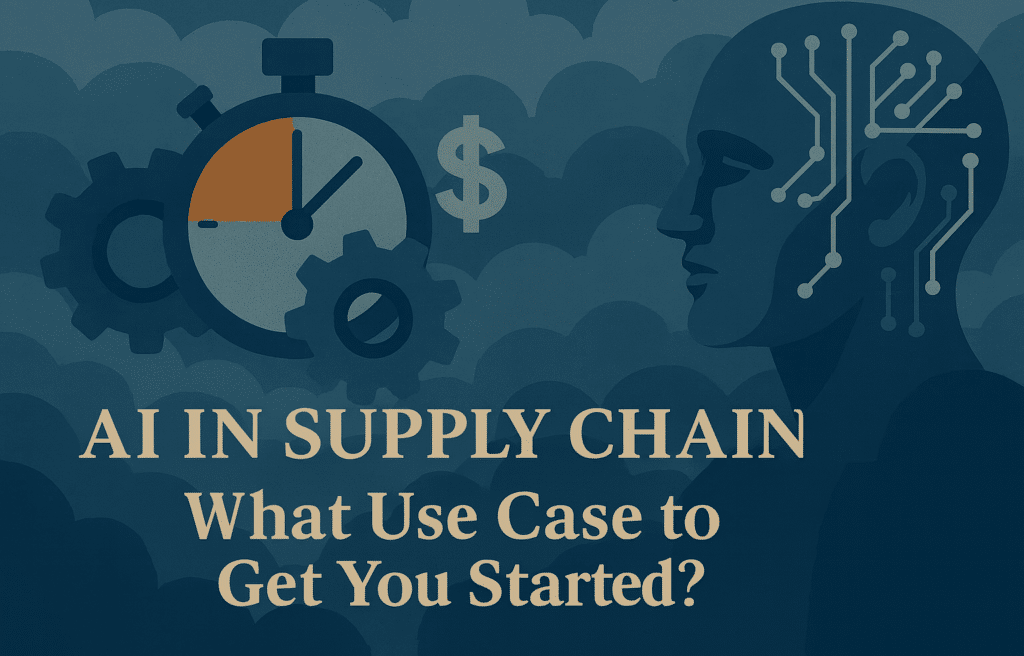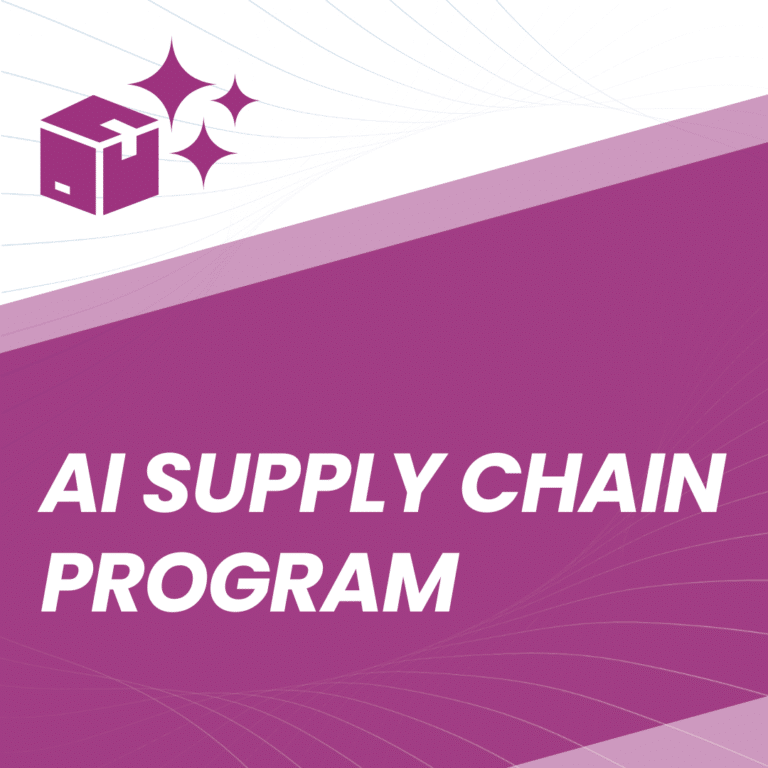
Back in the early days of big data, I remember when unsupervised modeling first appeared, way before Artificial Intelligence was a thing.
The approach was often: get the technology first, find the use case later. Executives loved the mantra of “you don’t know what you don’t know,” and committees were willing to pour money into architectures designed to aggregate all possible data, hoping that machine learning would uncover hidden gems. Most of the time, the result was underwhelming: expensive infrastructures, complex models, and no outstanding discoveries.
With Artificial Intelligence in Supply Chain, the dynamic feels different. Perhaps because we’ve already lived through the disappointments of past hype cycles, business leaders today tend to ask about the use case first. This caution is healthy—but it can also slow down adoption. After all, if everyone waits for someone else to prove a use case, too few references exist to build confidence.
A good way to move forward is to gain a clearer view of the kinds of use cases worth investing in. Some of them may be closer to reality than you imagine
AI Data-Driven Use Cases
These rely on your company’s data and business knowledge. Predictive, generative, and analytic AI belong here: demand forecasting, predictive maintenance, automated report generation, anomaly detection. These are the “classic” use cases most companies think of when they hear AI.
The challenge: they are heavy lifts. Many organizations hesitate to launch them, doubting whether their data is mature enough or fearing the value will be uncertain. They are powerful, but they require trust in the foundations—data quality, governance, and integration. As a result, these are often the use cases everyone is waiting for, but few are actually launching apart from sector giants
AI Underdog Use Cases
The second family is often underrated: AI-powered tools that help organizations escape the rigidity of large ERP vendors and software monopolies. For decades, companies have bent their processes to fit the software. With modern AI, low-code platforms, and robust APIs, the balance changes. Leaders can now assemble small, dedicated applications that patch inefficiencies and reduce dependency on vendor roadmaps.
Back in the 2000s, the pioneers of Excel macros saved their organizations hundreds of hours by automating tedious processes—fragile hacks, but impactful. Today, integrations are more stable, coding languages more accessible, and the ecosystem of specialized AI tools more mature. These “underdog” use cases don’t grab headlines, but they deliver fast, pragmatic impact by lowering costs and making processes more adaptive.
What You Can Do (Instead of Waiting)
If you are reluctant to move ahead until use cases become clearer, there is still one crucial step you can take: invest in AI literacy across your leadership team. Literacy is what enables leaders to distinguish hype from value, to understand what is transferable, and to transpose lessons from other industries into their own context.
Without literacy, it is impossible to judge whether a use case is too narrow to matter, or generalizable enough to be worth investing in. With literacy, executives can act faster when real opportunities emerge.
Conclusion in Artificial Intelligence Use Cases
AI is not about adopting technology for its own sake. It is about choosing the right use cases—those that fit your data reality, and those that can free you from old constraints.
Some use cases will be ambitious and data-heavy. Others will be small, incremental, and unexpectedly transformative. The hidden opportunity lies in recognizing both families, and in preparing your leadership team to tell the difference.
Artificial Intelligence Use Cases: Key takeout
What kinds of AI use cases to consider first?
Two families stand out: data-driven use cases that rely on company data and business knowledge, and underdog use cases that build lightweight apps on top of existing systems to reduce dependency and cost.
Why do data-driven AI projects stall?
They are heavy lifts that require trust in foundations: data quality, governance, and integration. Many organizations doubt data maturity or fear uncertain ROI, which slows launch decisions.
What are “underdog” AI use cases?
Pragmatic, small applications that patch process gaps and bypass vendor rigidity using AI, low-code, and APIs. They deliver fast wins by lowering costs and increasing flexibility.
How can we move forward if we are unsure about use cases?
Invest in AI literacy for leadership. Literacy helps separate hype from value, judge transferability, and act quickly when credible opportunities appear.
What does success look like in the next 90 days?
Pilot one use case from each family: a focused data-driven pilot with clear KPIs, and a lightweight “underdog” tool that automates a painful workflow. Measure decision latency, rework hours, and service level.


